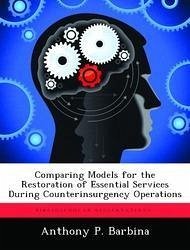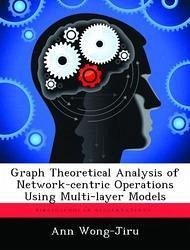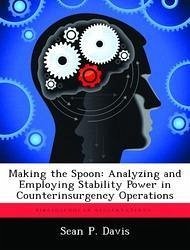Nicht lieferbar

Comparing Models for the Restoration of Essential Services During Counterinsurgency Operations
Versandkostenfrei!
Nicht lieferbar
What is the military's most effective model for restoring essential services during counterinsurgency operations? That question drove this monograph to compare the most popular restoration model, the SWEAT Model, against a new model, the Factor-Precedence Model. This monograph explains why the Factor-Precedence Model is more effective than the SWEAT Model for restoring essentials services during past, present, and future counterinsurgency operations. Counterinsurgency operations include those military, paramilitary, political, economic, psychological, and civic actions taken by a government to...
What is the military's most effective model for restoring essential services during counterinsurgency operations? That question drove this monograph to compare the most popular restoration model, the SWEAT Model, against a new model, the Factor-Precedence Model. This monograph explains why the Factor-Precedence Model is more effective than the SWEAT Model for restoring essentials services during past, present, and future counterinsurgency operations. Counterinsurgency operations include those military, paramilitary, political, economic, psychological, and civic actions taken by a government to defeat an insurgency. During counterinsurgency operations, restoring essential services, the infrastructure and supporting services that provide survival and comfort needs to the people, has become an important way to increase government legitimacy and decrease insurgent support. To leverage the positive impacts of essential services efforts, Department of Defense guidance and resource allocations require military forces to execute restoration of services and infrastructure. Because of the complex interactions required to restore essential services, counterinsurgency practitioners need an effective model to understand the environment, plan and analyze options, and conduct the work. Military and civilian experts have produced many models to provide simple tools that help practitioners understand, prioritize, and execute essential services restoration. The SWEAT Model has become the most popular of these models because the SWEAT Model provides an easy way to think about infrastructure categories while conducting projects to improve those categories. Many units have used the SWEAT Model in Iraq and Afghanistan since 2004. As an alternative to the SWEAT Model, the author proposes a new model called the Factor-Precedence Model that develops processes for geographic and cultural evaluation of services, prioritization of requirements, and continuous assessment during essential servi












